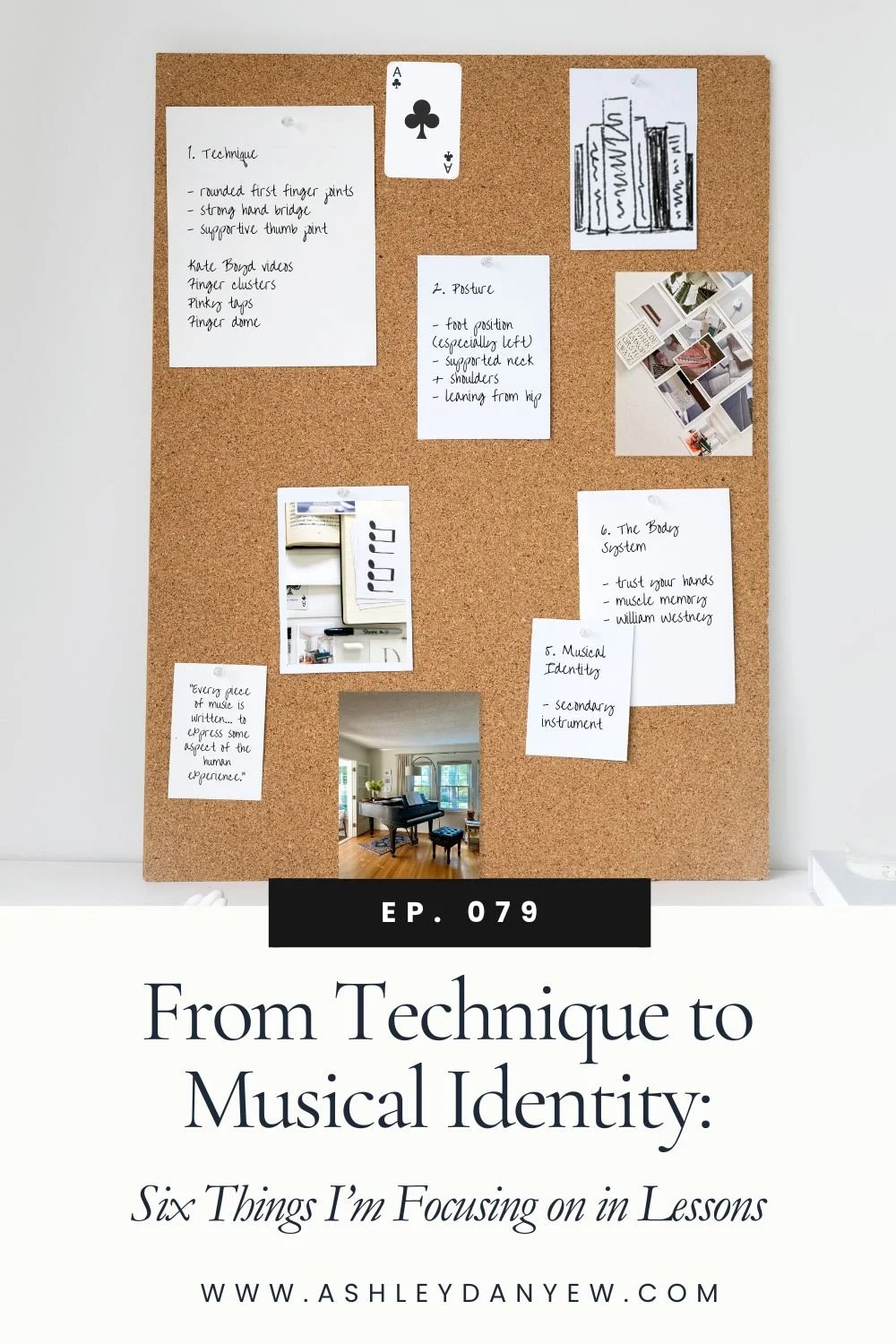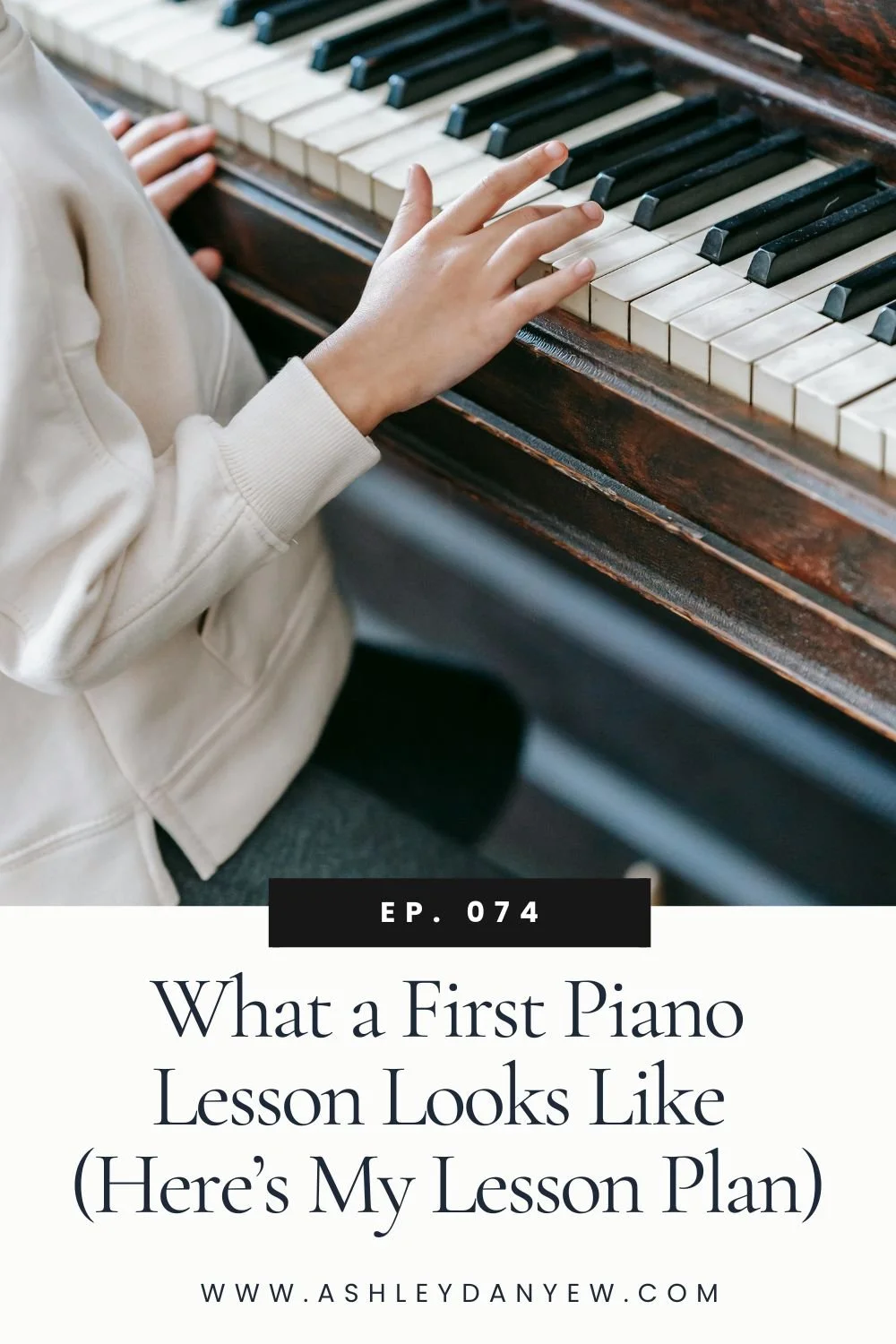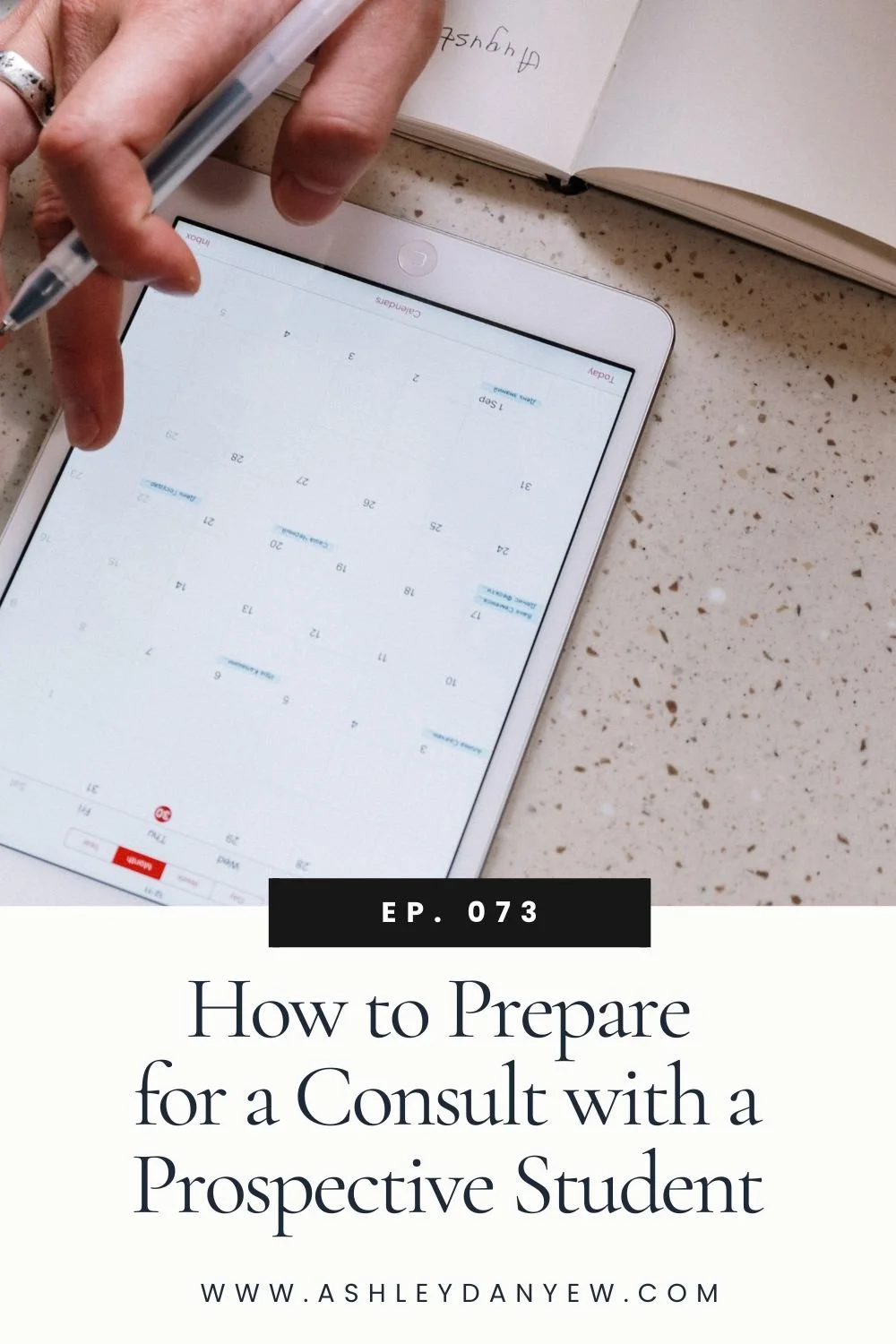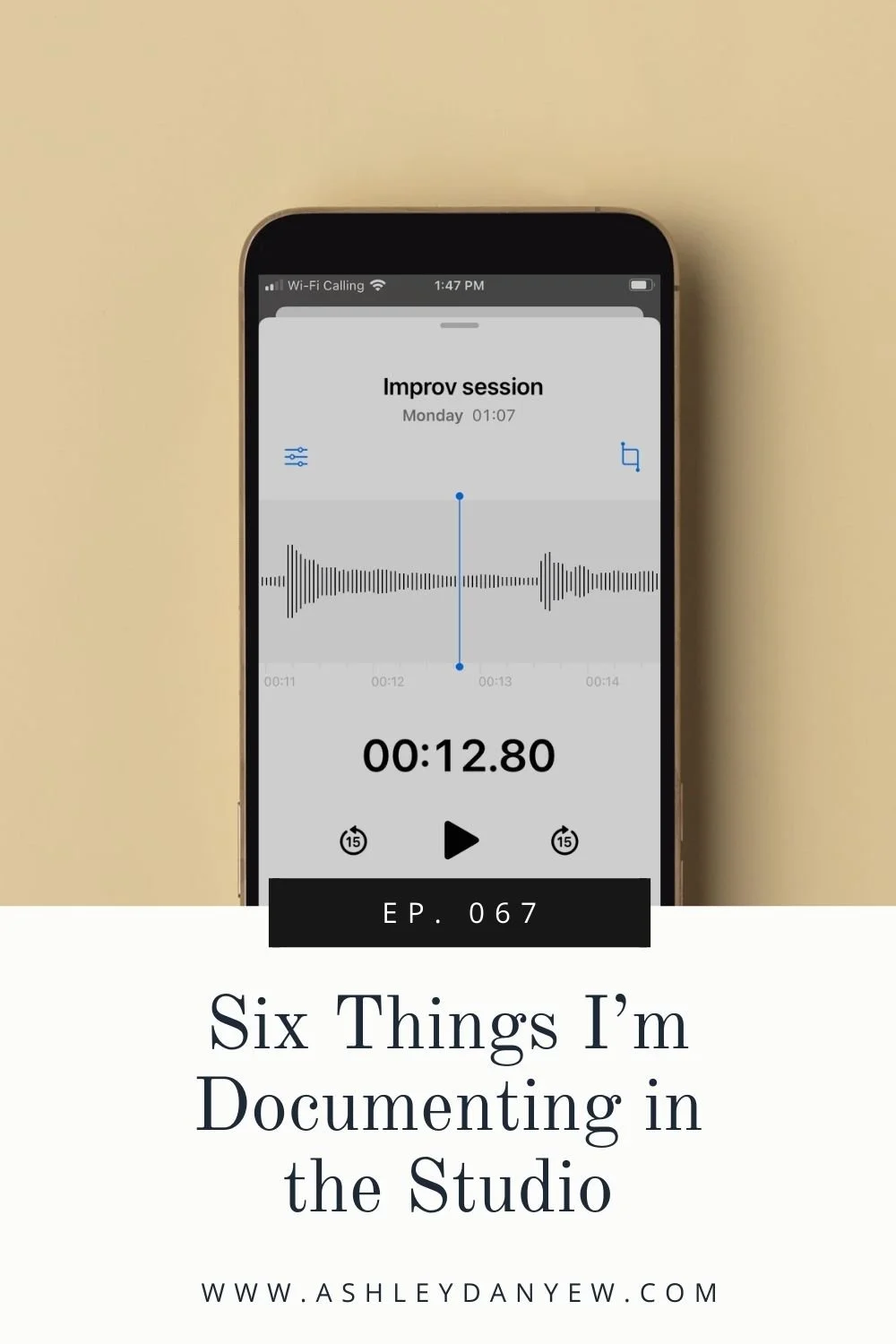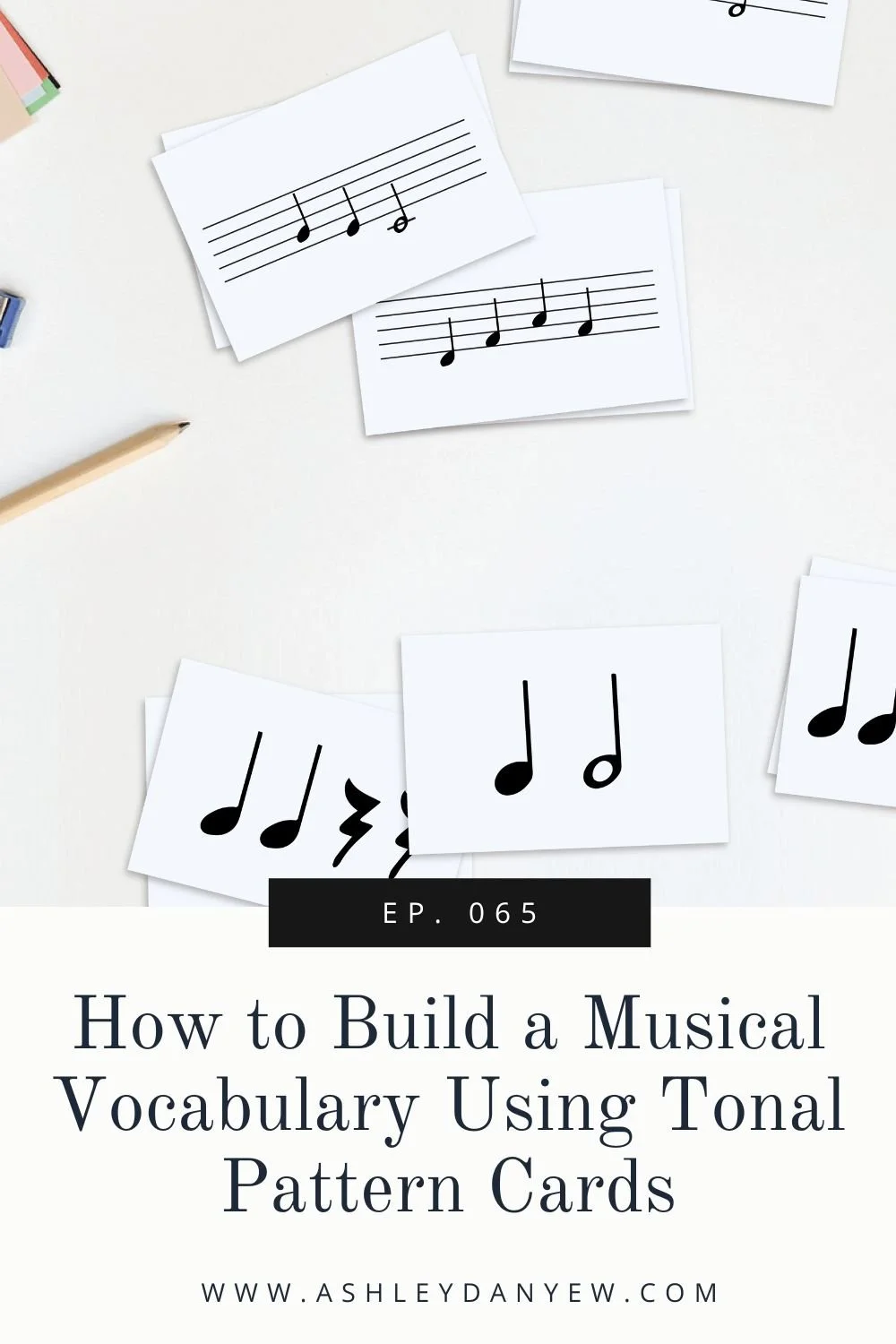Resources Mentioned
*Disclosure: some of the links in this episode are affiliate links, which means if you decide to purchase through any of them, I will earn a small commission. This helps support the podcast and allows me to continue creating free content. Thank you for your support!
Ep. 069 - A Musical Informance to Celebrate the Solar Eclipse
Ep. 071 - 3 Things I Learned From Hosting a Musical Informance
Musical Informance Planning Guide: A Resource for Studio Teachers
Piano Safari piano curriculum
Hand Position at the Piano: 5 Foundations of Piano Technique, Part 1 (Kate Boyd)
The Thumb in Piano Technique (Kate Boyd)
The Perfect Wrong Note: Learning to Trust Your Musical Self (William Westney)
Ep. 60 - How Do We Approach Mistakes in Music Teaching & Learning?
Insights from William Westney’s “The Perfect Wrong Note” (Musician & Co. Book Club)
Happy January!
I hope you had a restful teaching break and that you’re ready to dive back in with renewed energy, creativity, and motivation.
The Spring semester can be busy. In my studio, we have informances in March (which you heard me talk about last year—see episodes 068, 069, and 071), our state Solo Festival in May, and our annual year-end recital in June, plus 2-3 studio classes for each group (which ends up being 13 or so, for me) and of course, weekly lessons.
Because of this, we end up focusing more on performance skills in the Spring:
starting and finishing well
lifting hands back to our laps
how to practice performing at home
bowing, and memorization strategies.
Leading up to the informances, we focus on:
how to talk to the audience
presentation skills
ensemble skills for those who are playing duets
how to demonstrate or teach a musical concept
But as you know, there’s so much more that happens in a music lesson—so much more that we’re teaching and cultivating in our students. It’s not just about performance or mastery or checking things off. It’s about developing musicianship—developing musicians—and helping them develop the skills and creativity and confidence they need to continue making music throughout their lives.
I made some notes about this in my teaching journal at the end of last year. As I was preparing for the first week of lessons last week, I recognized six things I’ve been focusing on and prioritizing in lessons recently that I want to make sure to carry into this new year.
I hope this inspires you to reflect on what you’re prioritizing in your teaching and to plan your lessons and classes with intention.
1. Technique
The first thing I’m focusing on is technique.
Maybe this comes from recognizing my own technique deficiencies when I was in college and grad school and feeling like my teachers never really focused on this. Have you experienced that, too?
I really love how technique is built into the Piano Safari curriculum from the very beginning—even my Kindergarten and 1st grade students are learning about arm weight, dropping into the keys, bouncing from the elbow, and wrist rotation.
There are three technique things specifically that I’ve been paying attention to in lessons.
a. Rounded First Finger Joints
The first is the first finger joint (especially fingers 2, 3, and 4)—making sure it’s strong and doesn’t buckle.
For some students, I’ve noticed this happens when they press into the key with too much force—perhaps they’re misinterpreting what I mean when I say “Play with strong fingers.”
Others may not really know what a “strong finger joint” means or feels like.
Piano professor Kate Boyd (“The Piano Prof” on YouTube) has a helpful video on this topic with a few simple exercises. First, placing the tips of the fingers together to create a dome or arch shape and pressing lightly. Do you feel that joint strength? I’m going to bring this activity into lessons this week.
b. Strong Hand Bridge
The second element of technique is a strong hand bridge—one that doesn’t collapse, especially when the pinky plays.
We talk about a “rounded hand shape” or “piano hand” from the very beginning. But one thing I’ve noticed with a few students is that the bridge appears tilted—it’s lower on the pinky side of the hand. When the student plays the pinky alone or even a blocked fifth using the thumb and pinky, the fingers fall over toward the pinky side of the hand like dominoes. That’s the analogy I came up with.
This is a sign of a weak 5th finger and an unsupported hand bridge. To help, we’ve been tapping rhythm patterns with finger clusters—basically, all five finger tips pressed together in a row. Kate Boyd also mentions lifting and tapping just the 5th finger to help develop and strengthen that muscle on the outside of the hand. To do this, lay your forearm down on the piano lid or a table, bring your hand into a rounded hand shape, relax the thumb, and lift and tap the pinky multiple times.
c. Supportive Thumb Joint
The third element of technique is a supprotive thumb joint.
Do you ever talk to your students about the anatomy of their hand? How the bones of each finger (including the thumb) connect all the way down to the wrist?
I’ve noticed that a few students in my studio play with a collapsed thumb joint (where the thumb connects to the palm). This causes the thumb to curve outward and restricts the motion. It’s a sign that the student is playing from the second joint vs. playing from the third joint (at the base of the hand, the wrist).
Sometimes reminding the student to play “on the corner of the nail” helps. We also do a simple 5th-6th exercise, hands separately, with the other hand supporting that thumb joint until it’s strong enough to work on its own. You can also do this with a piece of string—loop the string around the 2nd thumb joint and have the other hand gently guide it back toward you, out from under the hand.
Again, Kate Boyd has a helpful video just about thumb technique—she’s been my go-to for discovering new ways to approach these technique challenges.
2. Posture
We’re always talking about posture, right? But beyond reminding students to sit up tall or relax their shoulders, I’ve been noticing my students’ feet. Particularly, the left foot, as it’s usually resting on the floor while the right foot is on the pedal.
One student in particular has a habit of tucking the left foot up next to his right foot when playing, which creates a feeling of imbalance. We’re talking about the importance of using that foot as an anchor, grounding yourself so your upper body is supported as you lean to the left or right.
One other thing I’ve noticed with two of my older students is a tendency to pull the neck forward. It’s not a reading issue—often, they’re looking at their hands when it happens. We’ve talked about leaning into the music, but leaning from the hips, not the neck and shoulders.
I recognize that this is something they need to become aware of and correct on their own, because me reminding them of it when I see it happen in lessons is probably not enough to make a change.
3. Student-Driven Practicing Strategies
Do you write assignment sheets for your students?
I wrote a blog post a few years ago about my approach to this through the years. I started writing digital assignment sheets in Notability during the pandemic and never went back. This has been a helpful way to keep parents in the loop and keep a record of everything we’re working on for my own planning.
Something new I’m prioritizing is writing assignments in student’s words. I can come up with ways to explain it—using words I think make sense—but how are they thinking about it? What reminders are most important for them to see and read? How do they explain it?
I’m making a point to stop and ask, “How can I write this for you?” or “What are two reminders for practicing this piece?” And then I write as they explain it to me. Sometimes, I’ll also have them write the reminder right in the score, again in their own words, so they see it right when they turn to that piece.
I will say that most often, when I take the time to ask a student to explain it in their own words, they do. They don’t just repeat it the way I said it. I find that fascinating!
4. Musical Expression
The fourth thing I’m focusing on in lessons is musical expression.
We’ve been having more conversations about the emotions in music. I know some of this was inspired by reading Marvin Blickenstaff’s Inspired Piano Teaching book last Fall. He writes:
“We need to preach a doctrine of emotions to students: that every piece of music is written for the same purpose—to express some aspect of the human experience.”
I was talking with a 4th grader a few months ago about what it means to make something musical—the difference between what a computer or AI would sound like and what a musician is capable of creating.
A computer can process and create musical sounds accurately, but not with expression. Not with feelings or emotions or shape.
I’ve started asking questions like, “How does this music make you feel?” or “What do you want the audience to feel when they hear you play?” or “What do you think the composer was thinking when they named this piece?”
5. Musical Identity
The fifth thing I’m prioritizing in lessons is fostering a strong sense of musical identity.
Sometimes, it’s simply a matter of reminding them that they already are a musician. They don’t need to reach a certain level or perform a certain number of times or take years of lessons.
I was working with a 2nd grade student on Alexander Reinagle’s Minuet, Op. 2, No. 1 in Piano Safari, Repertoire Book 2. We were talking about “same” notes (repeated notes) but not playing them all the same way. I said,
“These notes look the same on the page, right? But you're a musician, so you know it won't sound musical if we play all three exactly the same way. They're either leading somewhere or coming from somewhere, not staying in one place."
Related to this, I’m looking for opportunities to connect what we do in lessons to a student’s other instrument (if they have one).
Last Fall, I was working with a 5th grader on an arrangement of “Ode to Joy.” At the time, she had just started playing the violin in her school music program. So I asked her to "think like a violinist”—to play with a smooth legato sound (like bowing) and not clip the repeated notes.
This small point of connection made all the difference in her playing. It gave her a new framework for thinking about her piano technique. And it strengthened her identity as a musician.
6. The Body System
The sixth thing I’m focusing on is learning how to use and trust the body system.
William Westney writes about this in his book, The Perfect Wrong Note, which I talked about back in Ep. 60. I also wrote it about it on the Musician & Co. blog for Book Club.
He explains that mastering performance skills is “a dynamic, natural, open-systems process. There is a mind system (my thoughts), a body system (what my muscles and nerves are experiencing), and an emotional system (my feelings), just to name a few.”
If you’re a piano teacher, you’ve probably heard yourself say, “Keep your eyes on the music”—most likely in an effort to encourage students to develop fluent reading skills. Sometimes, students develop the habit of looking back and forth between their hands and the music as they play, which results in them losing their place more easily and making more mistakes.
Westney explains:
“[The body system] is a sort of parallel system with its own logic. [It] seeks a way to communicate with the mind-system about solving a specific problem.”
Isn’t that interesting?
I’ve noticed that a few of my intermediate students have developed this habit, so we’ve been having conversations about the body system, trusting your hands, learning how to feel your way around the keyboard using topography, and developing muscle memory.
Summary
So, there you go. A few insights into what I’m thinking about in music teaching and learning as we begin the new year and what I’m focusing on in lessons.
I’d love to hear from you:
What are you prioritizing in lessons this month? What are you observing in your students? What conversations are you having in lessons lately? I’d love to hear from you. As always, reach out to me on Instagram or send me an email—ashley@ashleydanyew.com.

